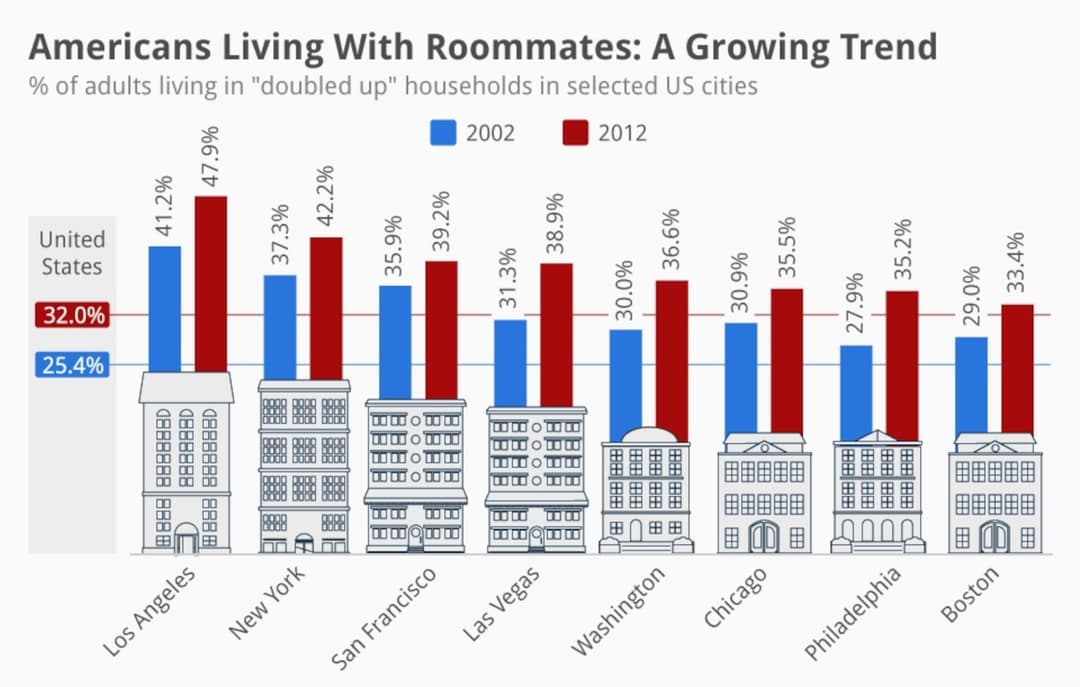
Percentage of Adults Living as Roommates in USA
The American Community Survey from 2020 conducted by the US Census Bureau estimates that 39% of individuals between the ages of 25 and 34 share a home with more than one person. Adults that share a home in this age bracket make up the majority of all adults. Although the percentage diminishes with age, it is still significant among younger persons.
It's crucial to remember that these figures are a snapshot in time and may change depending on a person's location, the state of the economy, and other variables.
According to data from the US Census Bureau, the proportion of individuals who share a room declines with age. For instance, roughly 27% of people in the 35 to 44 age group share a home with more than one individual. The ratio falls to 22% for individuals between the ages of 45 and 54, and it is rising by 10% every year for those 55 and older.
It's also important to note that, despite recent increases in the proportion of individuals living with roommates, particularly among young adults, this living arrangement is still very unusual in general. The majority of individuals in the US continue to live with their families or in single-person homes, according to the US Census Bureau.
Several causes, including as growing housing costs, student loan debt, and a desire for a more adaptable and sociable lifestyle, might be blamed for the trend of more young adults sharing a room. In addition, some young adults are delaying getting married and buying a home in favour of living with roommates as a cost-saving tactic.

It's important to take into account the geographical differences in the proportion of people who share a room. For instance, compared to other regions of the country, a higher proportion of people live with roommates in particular cities with high housing expenses, such as San Francisco and New York. In contrast, the proportion of people living with roommates is lower in places that are more cheap, including the Midwest and the South.
The kind of living arrangement is a further consideration. Some grownups share a home with another person in a classic roommate arrangement, renting separate bedrooms but sharing common areas like the living room and kitchen. Others, on the other hand, opt to live in shared housing or co-living situations, where several people occupy a single residence, frequently with separate bedrooms and shared common areas.
In conclusion, even though the proportion of people living with roommates has grown recently, it is still a relatively unusual living situation. Young adults between the ages of 25 and 34 are particularly affected by the trend, as they are more likely to live with roommates as a result of increased housing costs, mounting student loan debt, and a desire for a more adaptable and sociable lifestyle. With a larger percentage in cities with high housing prices and a smaller percentage in more inexpensive places, the proportion of adults living with roommates varies by region.
